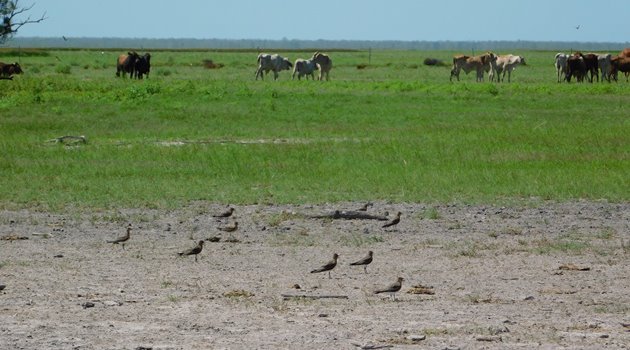
Although we have not had a lot of rain recently there has been enough to turn the dry dusty landscape into a lush green environment. We often think about how deceiving it would have been to the early explorers that came to the north of Australia during the wet season. They believed there was potential for sheep in those days, but now there are only cattle. The cattle are a cross breed of Brahman and shorthorn, so they can withstand the extreme weather. There are cattle stations around Broome that are on both sides of the highway going either north or south. To be able to bird from your vehicle on the bitumen when the land is flooded is perfect!
After the initial rain we started to observe “hoppers” around Broome. These are grasshoppers before they can fly. Soon we started to see more and more Oriental Pratincoles arrive. The birds swirl around in large flocks searching for the grasshoppers and feeding. The “hoppers” soon turned into locusts and even beach tracks were covered in locusts that took off as you drive along. There is an excellent identification guide here.
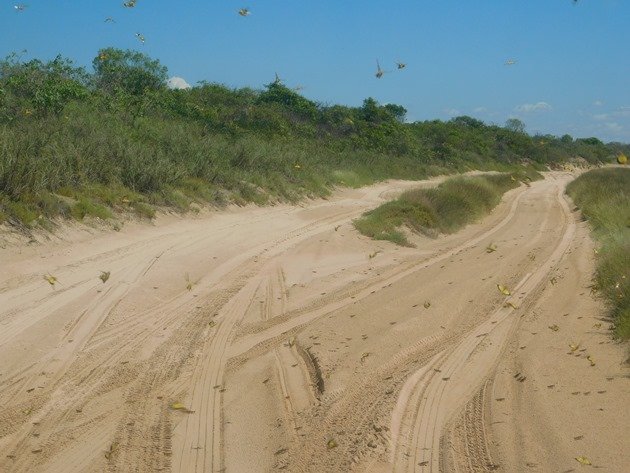
Driving out along the main highway out of town the land looks like lush green fields. The cattle are enjoying the new growth and the Oriental Pratincoles have arrived in huge numbers. Thousands of the birds swirl above the grassy plains and swoop down chasing insects. It is a truly magnificent sight.
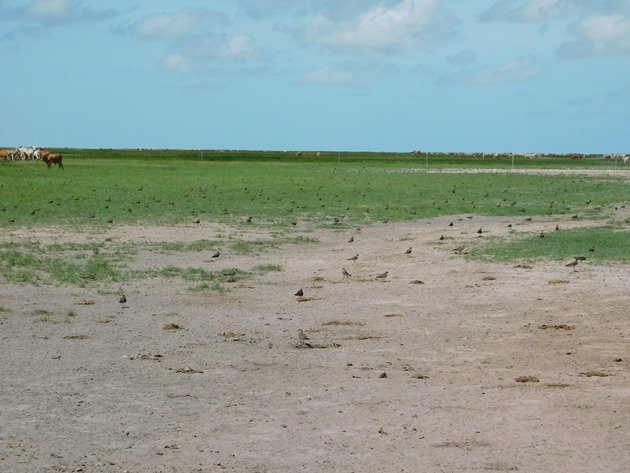
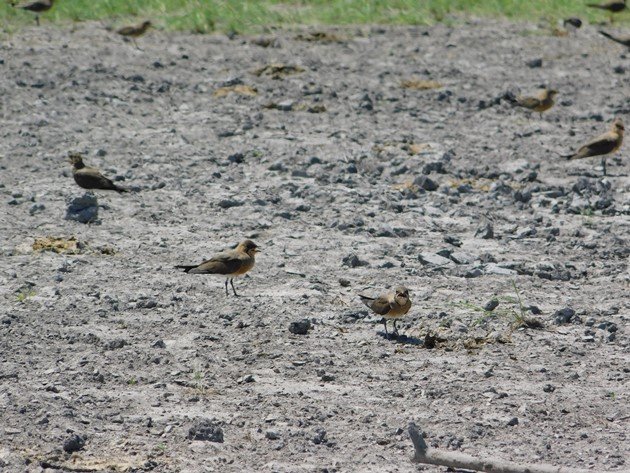
Any remaining puddles from recent rains are attractive to the Oriental Pratincoles and they gather in the hundred around them. Often the puddle remains at the station gates and the station can no longer drive to large areas of their property after significant rain. However, the birds are taking care of the grasshoppers and locusts and they are the property owner’s friend.
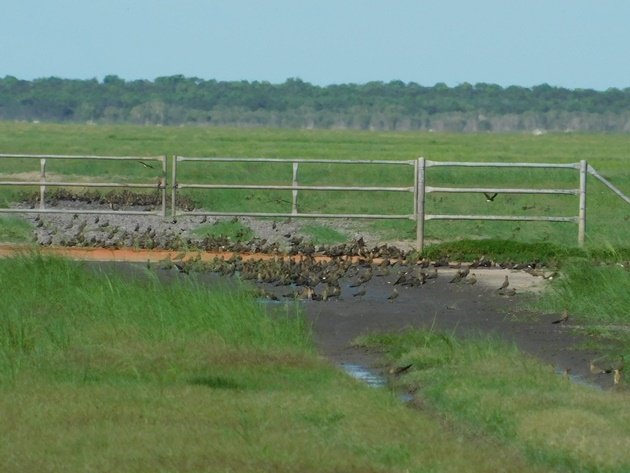
It is predicted that we will have a lot more rain in coming months. We can expect to observe huge numbers of both Oriental Pratincoles, Australian Pratincoles, Oriental Plovers and Little Curlew feeding on the locusts as they develop.
For those of you interested in record numbers of grasshopper eating waders there are some good articles in Google Scholar. One article wrote of the spectacular numbers that we experienced here in 2010. Only time will tell if this February will reward us with extreme numbers of grasshopper eating waders once again. To the station owners these birds are a relief and to the birder they are an absolute joy to watch!


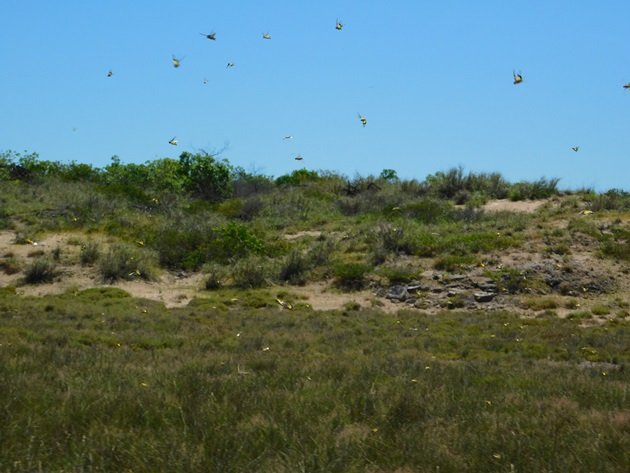
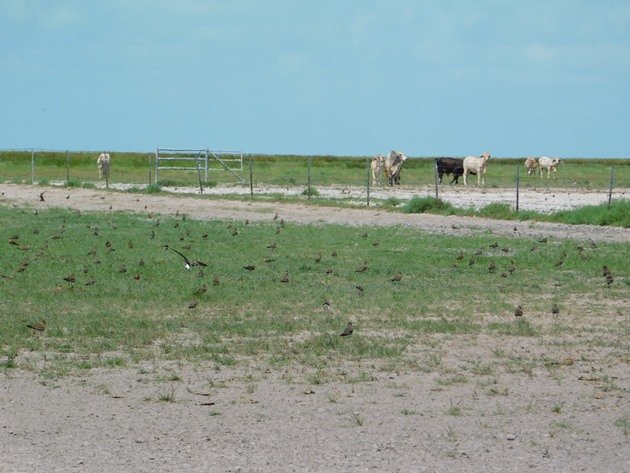
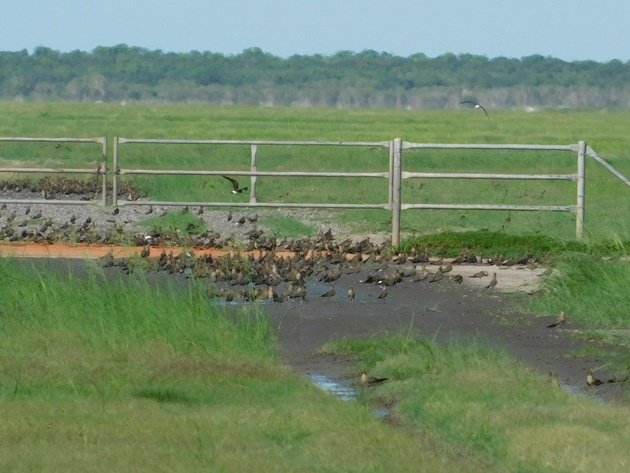











Leave a Comment